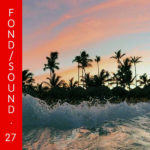
As a writer, one always has floating on one’s head drafts of things to cover. For various years I’ve always wanted to really tell the story of the music of Brazil’s Minas Gerais region, post-Clube Da Esquina. That’s part of the reason I chose to focus intently on it for my next mix with LYL Radio. If you hear the music I wish I could share the full history of, maybe you might strike some interest in digging deeper yourself. That Minas Gerais sound, once heard, is impossible to pinpoint belonging anywhere else.
If you’re unfamiliar with Clube Da Esquina, now is the time for you to go elsewhere and rediscover quite possibly one of the greatest albums ever released, regardless of country. As close to Brazil came to creating it’s own White Album, Let It Bleed, and What’s Going On (albeit all rolled into one thing…) Clube Da Esquina bares the hallmark of all canon albums.

Two young boys, Milton Nascimento (a very young Afro-Brazilian originally from Rio De Janeira) befriends Lô Borges and grow up together alongside other friends in the capital of Minas Gerais, Belo Horizonte — away from the glittery beaches of Bahia and the cosmopolitan world Brasilia and elsewhere — living in abject poverty, dreaming of a better life, elsewhere.

With time, at the corner Rua Divinópolis and Rua Paraisópolis, in Santa Tereza, they’d befriend others who shared their same love of the Beatles, Miles Davis, bossa nova, samba, psychedelia and the regional folk music of their city. With time this “corner club” grew to encompass impromptu jam sessions, communal artistic explorations, and the first inklings that, hey, rather than look outward they might just have something special here.

Pooling together songs from each of their friends, future MPB heroes like Toninho Horta, Nelson Angelo, and Beto Guedes, they took them to a studio in Rio and in due time birthed Clube Da Esquina. A collective finally found its mission statement.

Most English-authored histories end the story there. However, I think that there is far larger story to continue after it. For the next decade releases by Lô Borges, Milton Nascimento, Flavio Venturini, and Beto Guedes would expand on that original idea, realizing ever further what that sound can be through sonics, styles, and experiments. Collaborations would continue. Music, for those found along the streets and cities forgotten by globalization’s modern push, would flourish.

For me, Edson Natale’s Nina Maika marks its future promise. If someone imagines Abbey Road signaling the end of an era, such a release (and hopefully this mix) show there’s myriad ways to keep going on that long and winding road.
Ruas Y Cidades (Minas Gerais Special 1973-1990)
- Flávio Venturini (ft. Milton Nascimento) – Qualquer Coisa A Haver Com O Paraíso
- Beto Guedes – Amor de Índio
- Lô Borges – A Força do Vento
- Flávio Venturini – Espanhola
- Milton Nascimento – Ruas De Cidade
- Os Borges – Qualquer Caminho
- Prata Da Casa – Voar
- 14 Bis – Caçador de Mim
- Beto Mondadori – Suco De Imaginação
- Tadeu Franco – Se Meu Jardim Der Flor
- Beto Guedes, Danilo Caymmi, Novelli, Toninho Horta – Ponta Negra
- Jaime Alem & Nair Candia – Olho de Vidro
- Milton Nascimento – Ponta de Areia
- Edson Natale – Pequena Canção Para Uma Mulher Nua
- Nelson Angelo – Harmonia Da Água
/DOWNLOAD/
